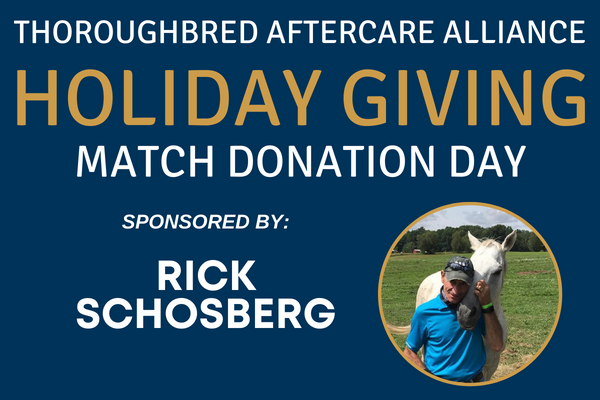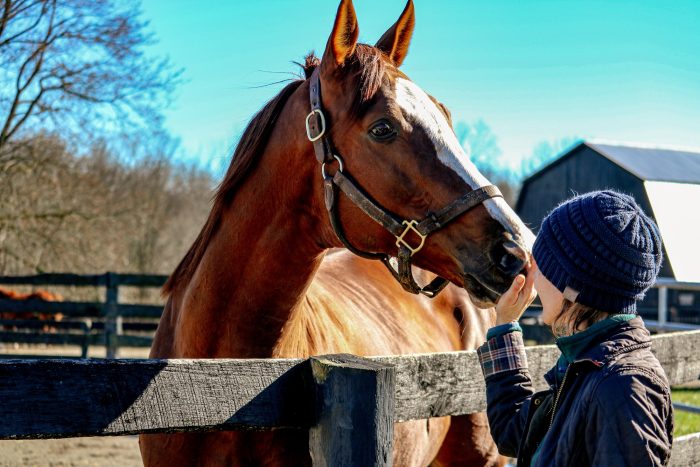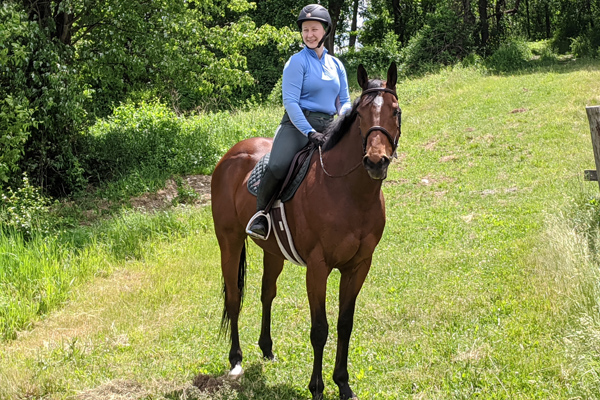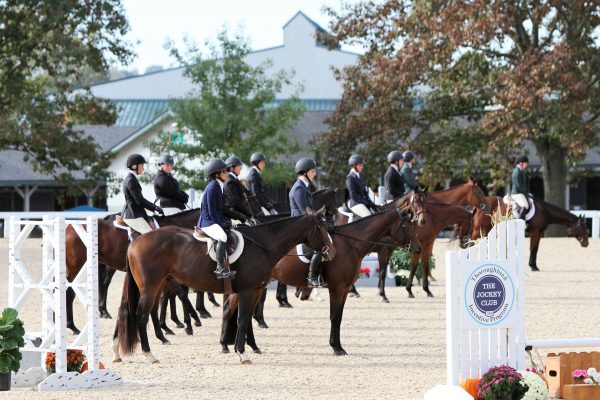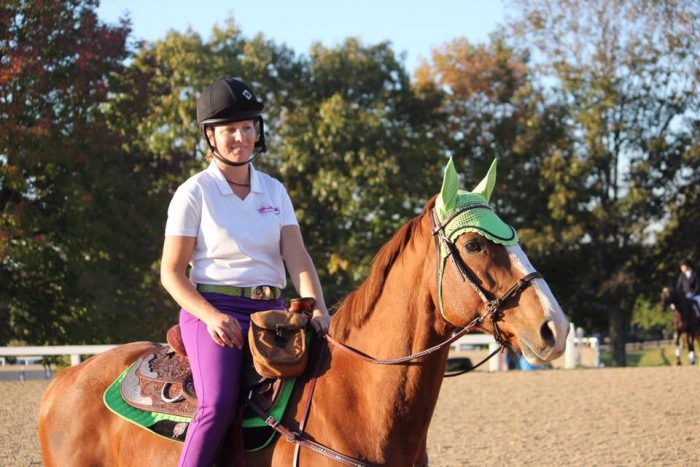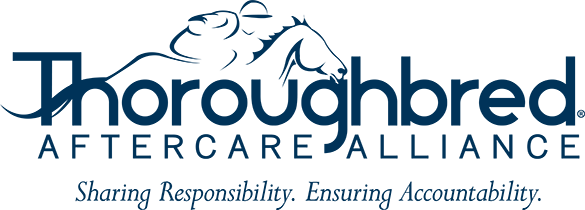TAKE THE LEAD
As part of the Thoroughbred Aftercare Alliance (TAA)’s month-long Holiday Giving Campaign, Rick Schosberg has pledged to match all donations up to $1,000 made to the TAA on Dec. 30, 2022. A veteran horse trainer, Schosberg intends to kick off his first day of retirement from training by supporting a cause about which he is deeply passionate— Thoroughbred aftercare. After 35 years, 5,973 starts, and over $38 million in earnings, the New York horseman ran his final race Dec. 29 at Aqueduct with the stakes placed filly, Silken Dollar (NY). Schosberg’s participation in racing extends far beyond the shed row. He currently serves as president of New York aftercare initiatives TAKE THE LEAD and Take 2, first vice president of the New York Thoroughbred Horsemen’s Association, and a member of the TAA Board of Directors. As he transitions out of training, Schosberg is eager to turn his full attention to promoting responsible aftercare and other industry initiatives to support the longevity of the sport and the safety of its Thoroughbred athletes. “Funding aftercare should be a top priority for every industry participant,” said Rick Schosberg. “The Thoroughbred Aftercare Alliance does a great job vetting aftercare organizations to ensure the safety of retired Thoroughbreds, but the industry must envision more unique and creative funding mechanisms to generate more resources for the retirees that have so gallantly kept the sport going. I hope you’ll join me in donating today to the TAA’s year-end giving campaign.” “Congratulations to Rick on his retirement from training,” said TAA Operations Consultant, Stacie Clark Rogers. “While one door closes, we are so eager to see all the good that is to come from having him focused on advocating for aftercare and improving the sport. What better way to celebrate his first day of retirement than supporting the TAA’s Holiday Giving Campaign.” TAA’s Holiday Giving Campaign commenced November 29th and is scheduled to conclude New Year’s Eve. Those wishing to support the TAA, its 81 accredited organizations, and thousands of retired Thoroughbreds can donate through the TAA’s website or text DONATE to 56651. During the Holiday Giving Campaign, TAA is also offering donors the benefit of sending digital holiday cards to colleagues, friends, and loved ones. Throughout the end of the year, the Thoroughbred Aftercare Alliance will continue to host special one-day only donation matches with some of horse racing’s biggest names. For more chances to double your donation, watch the TAA’s social media, website, and industry advertisements for the next Holiday Giving match day announcement. To learn more and donate to the TAA’s Holiday Giving campaign, CLICK HERE.
Read More >This year the Thoroughbred Aftercare Alliance celebrates 10 years of service since being established by the industry—an anniversary that offers racing an opportunity to make actionable goals for continued support of Thoroughbreds. Here is a look at where TAA has been in those years and where it might be going, with help from racing and aftercare industry veterans: Jeff Bloom, TAA president and managing director of Bloom Racing; Richard Schosberg, director and aftercare chair of the New York Thoroughbred Horsemen’s Association, president of TAKE THE LEAD, and TAA board member; Kristin Werner, senior counsel for The Jockey Club and administrator of the Thoroughbred Incentive Program; Jen Roytz, former executive director of the Retired Racehorse Project; Anna Ford, Thoroughbred program director for TAA-accredited New Vocations Racehorse Adoption Program; Lisa Molloy, program director of TAA-accredited ReRun; Laurie Lane, cofounder and president of TAA-accredited Second Call Thoroughbred Adoption & Placement; and Kim Smith, founder of TAA-accredited Second Stride. Q: Why is there a need for industry oversight of aftercare? Werner: The conversations about aftercare really started for me around 2009 or 2010. There was some retraining, retirement, and adoption going on and organizations like Thoroughbred Retirement Foundation, New Vocations, and Thoroughbred Charities of America were doing good work. But, the overall aftercare picture looked a bit piecemeal with gaps in services and areas of the country. And, it was not supported in any large part by the racing industry. As social media continued its rise in popularity, more and more cases of “rescue organizations” needing to be rescued began to appear. The general public became more aware of the fate of Thoroughbreds once their racing careers were complete. It was apparent that a multi-faceted solution was needed, which included accreditation of organizations providing aftercare, a funding source from industry constituents for those organizations to do their work, and incentive programs for Thoroughbreds in a second career. In the years that followed, this was accomplished through the formation of the Thoroughbred Incentive Program, Thoroughbred Aftercare Alliance, Retired Racehorse Project, and numerous other regional and track-based organizations focused on supporting organizations providing aftercare. Molloy: Prior to the formation of the Thoroughbred Aftercare Alliance, there was a time when there were so many rescues and programs operating without any guidance, provisions, or checks and balances. This created issues for those wanting to donate their horses and those wanting to donate money. Finding a way to responsibly retire a horse and ensure an empathetic and compassionate retirement with viable second career options really was a difficult path to navigate for an owner. The processes that are in place, especially using Thoroughbred Aftercare Alliance-accredited organizations working in partnership with racetrack programs like TAKE THE LEAD, provide transparency and prevent horses from falling through the cracks. Q: In the past decade what have you learned about the versatility of the Thoroughbred? Bloom: Over the last 10 years we have seen numerous examples and heartfelt stories of re-trained, re-homed, and re-purposed off-the-track racehorses. From assisting with therapeutic care for mentally and physically challenged children and adults, to full-blown sporting events such as polo, dressage, and eventing, to backyard trail riding, participating in television and movies and everything in-between, the Thoroughbred racehorse has proven to be incredibly kind, intelligent, versatile, and durable for use following their racing careers. Werner: I am fortunate to see on a daily basis how versatile the Thoroughbred is through my work with the Thoroughbred Incentive Program. We have Thoroughbreds participating in and excelling in hunter/jumpers, eventing, dressage, English and Western pleasure, barrel racing, ranch work, endurance, working equitation, therapeutic riding, equine-assisted therapy, mounted police, polo, polocrosse, competitive trail, recreational riding, and even skijoring. I am sure there are more that I am missing. Lane: It was the best kept secret. For those of us who worked with Thoroughbreds, we knew the versatility and the many incredible talents and tasks our Thoroughbreds could achieve just given the chance. Q: Do you think there has been a new interest in the Thoroughbred as a sport horse? Roytz: A thousand times yes. One of the most meaningful statistics that comes out of the data we collect from our Thoroughbred Makeover competitors each year is the ratio of first-time competitors versus repeat participants. Each year a significant portion of the competitors at the Thoroughbred Makeover are competing at the event, and often taking on the retraining of a Thoroughbred, for the first time. RRP’s mission is a bit different from most other aftercare organizations in that it focuses on expanding the market and increasing demand for Thoroughbreds in equestrian sports rather than doing hands-on re-training and re-homing. I strongly believe it takes both approaches to aftercare to be successful. The Jockey Club’s Thoroughbred Incentive Program and the TAKE2 program, both of which offer Thoroughbred-specific shows, horse show classes, and prizes throughout the country, as well as TIP’s recreational riding prizes and incentives, are other great examples of ways to incentivize equestrians to actively choose Thoroughbreds over other breeds for equestrian sports. Q: What do you think the factors in this have been that have helped a new interest in the use of the Thoroughbred? Roytz: Programs like the Retired Racehorse Project, The Jockey Club Thoroughbred Incentive Program, TAKE2 show series, and others that incentivize equestrians to compete on Thoroughbreds is a major driver in garnering new interest for Thoroughbreds in the equestrian world. I think adjusting our messaging as an industry will continue to help to appeal to equestrians. By positioning Thoroughbreds not as “retired racehorses” (which naturally insinuates a conclusion to their use/usefulness) but as “Thoroughbred sport horses” or “sport horse prospects” will make them more appealing to a non-racing equestrian audience as it focuses on these horses’ potential in new sports, the sports they are being marketed for, and that they will likely spend a more significant portion of their life doing. Q: What have been some of the most important developments of Thoroughbred Aftercare in the last 10 years? Ford: In the last 10 years
Read More >New York’s owners and trainers called on TAKE THE LEAD in record numbers with 135 racehorses transitioning through the program to TAA-accredited organizations for second careers.
Read More >The first, and crucial, step toward a successful, responsible post-racing retirement for a horse is finding the right place for the horse to land off the track. And that’s where triage programs working together with TAA-accredited organizations come in.
Read More >NYTHA’s TAKE THE LEAD works with TAA-accredited organizations to facilitate a safe transition off the track and into new homes and careers.
Read More >





